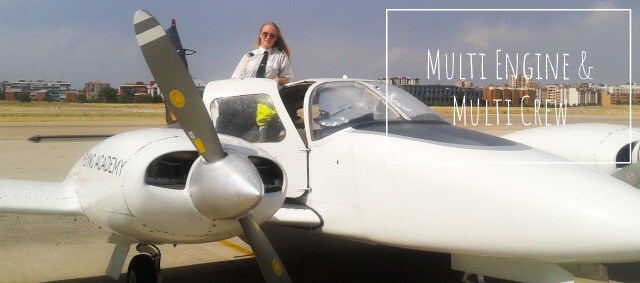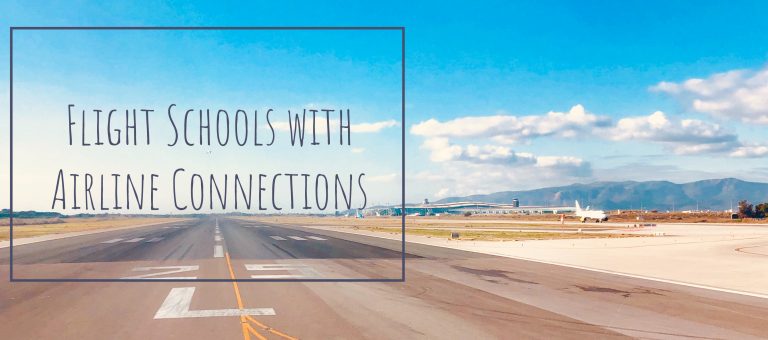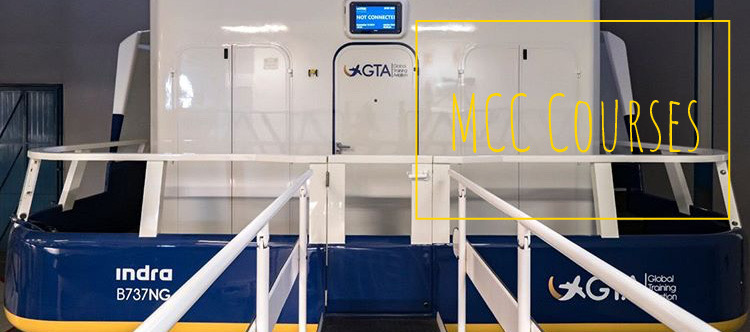After my CPL exam, a whole new challenge came up: I was going to fly the Piper Seneca, a slightly bigger airplane with two engines! We did 25 hours on this new type of plane in order to get the Multi Engine Rating.
It was a different type of airplane, so the cockpit was significantly different with regards to the location of the flap handle, the engine start buttons and other avionics (electronic items in the aircraft).
It was a heavier plane and also the controls were more stiff. I had to use quite some strength to pull the control to lift the nose. My roommate Ruben had the same issue and advised me to trim the nose more upwards before landing. Trimming the aircraft pitch means that if it is properly trimmed, the plane’s nose will stay in that pitch also if you release the controls. Normally the pitch is trimmed neutral, but if you pull the nose in the desired pitch and hold the trim button for a few seconds, the trim tab on the tail will adjust and you can feel that it takes less strength to hold the nose in this position. If you carefully release the control wheel and find that the airplane’s nose doesn’t go up or down, it means that you trimmed correctly! Ruben’s advise helped me a lot to control the airplane well and to learn to make smooth landings.
Soon I had the Multi Engine exam, which was in our school combined with the Instrument Rating. I flew with my examiner to Valladolid, doing IFR navigation and doing multiple simulated engine failures and manoeuvres on the way. We made an ILS approach in Valladolid and I had to be very precise with my corrections to not make mistakes and to make sure I passed the exam!
During the flight, the examiner didn’t say whether I did well or not, neither when we landed. I was really afraid that I did not pass and was doubting if I had made a mistake. Walking back towards the school, after we parked the airplane, we encountered our Chief Flight Instructor. My examiner suggested we would take a coffee all together. We had nice conversations during the coffee, but not a word was said about my performance during my exam. Eventually I asked him, very shy and afraid, how I did and if I passed my exam. He looked at me, smiled and said: ‘Of course you passed your exam!’ I was very relieved and knew that I passed another phase of flight school. The last phase was coming up: The Multi Crew Cooperation (MCC) course in the Airbus A320 Simulator!
During the whole flight school, my roommate Ruben and I did everything quite similarly, we passed the theory exams around the same time and we also finished our flying exams in the same week. We therefore were very lucky to the MCC course together!
First, we had classroom sessions to learn about CRM (crew resource management), all about the non-technical side of Aviation. Also, we needed to have basic knowledge on how to operate the Airbus A320. When we passed the A320 theory exam, the simulator phase started. We learned how to work together in an airplane simulator that was much faster than the airplanes we had flown before. From time to time it was quite stressful and you really have to learn to depend on each other, being two pilots in the cockpit. You need to learn to delegate tasks and to focus on your own task first instead of trying to help the other. Of course, we had to help each other as well, but one pilot always needed to take care of the flight, even if the other pilot was trying to solve a technical issue such as an engine failure or airplane decompression. It was a very interesting and fundamental course before starting to work as an airline pilot!




Guess there was no instagram during flight school 🙂 would love to read more about your training and simulators 🙂